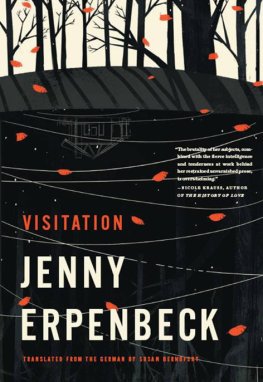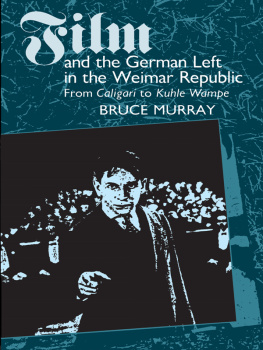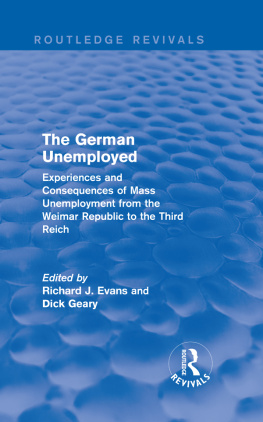Jenny Erpenbeck
Visitation
As the day is long and the world is old, many people can stand in the same place, one after the other.
Marie in Woyzeck, by Georg Bchner
If I came to you,
O woods of my youth, could you
Promise me peace once again?
Friedrich Hlderlin
When the house is finished, Death enters.
Arabic proverb
APPROXIMATELY TWENTY-FOUR THOUSAND years ago, a glacier advanced until it reached a large outcropping of rock that now is nothing more than a gentle hill above where the house stands. The enormous pressure exerted by the ice snapped and crushed the frozen trunks of the oaks, alders and pines that grew there, sections of rock broke away, splintered and were ground to bits, and lions, cheetahs and saber-toothed cats fled to more southerly climes. But the ice did not advance beyond this rocky crag. Gradually silence set in, and the ice began its labor, a labor of sleep. While over a period of millennia it stretched out or shifted its enormous cold body only a centimeter at a time, it gradually was polishing the rocky surface beneath until it was round and smooth. During warmer years, decades and centuries, the water on the surface of the block of ice melted a little, and in places where the sand beneath the ice was easy to wash away, the water slipped beneath the huge, heavy ice body. And so at the very spot where this rocky elevation had hindered the ices forward motion, the ice slid beneath itself in the form of water and thus began to retreat, flowing downhill. In colder years the ice was simply there, it lay where it was, a heavy weight. And where in warmer years it had carved channels in the ground as it melted, during the colder years, decades and centuries it pressed its ice into these channels with all its force to seal them up again.
When approximately eighteen thousand years ago the glaciers tongues began to melt soon followed, as the earth continued to grow warmer, by all its southernmost limbs it left only a few deposits behind in the depths of their channels, islands of ice, orphaned ice; later they were called dead ice.
Cut off from the body it had once belonged to and trapped in these channels, this ice melted only much later. Approximately thirteen thousand years before the start of the Common Era, it turned back into water, seeped into the earth, evaporated in the air and then rained back down again, circulating in the form of water between heaven and earth. When it could not penetrate any deeper because the ground was already saturated, it collected on top of the blue clay and rose up, its surface cutting through the dark earth, and now it became visible again within its channel as a clear lake. The sand that the water itself had ground from the rock when it was still ice now slid into this lake and sank to the bottom, and so at several points underwater mountains were formed, while in other spots the water remained as deep as the channel itself had originally been. For a time this lake would hold up its mirror to the sky amid the Brandenburg hills, it would lie smooth between the oaks, alders and pines that were growing once more, and much later, after human beings appeared, it was given a name by them: Mrkisches Meer, the Sea of the Mark Brandenburg; but one day it would vanish again, since, like every lake, it too was only temporary like every hollow shape, this channel existed only to be filled in completely some day. Even in the Sahara there was water once. Only in modern times did something come about there that is described in the language of science as desertification.
NO ONE IN THE VILLAGE knows where he comes from. Perhaps he was always here. He helps the farmers propagate their fruit trees in the spring, inoculating the wild stock with active buds around Midsummers Day and dormant ones when the sap rises for the second time, he grafts new scions onto the trees chosen for propagation using whip or cleft grafts depending on the thickness of the stock, he prepares the required mixture of wax, turpentine and resin, then bandages each wound with raffia or paper, everyone in the village knows that the trees propagated by him display the most regular crowns as they continue to grow. During the summer the farmers hire him as a reaper and to build the shocks. And when the time comes to drain the dark earth of the parcels of land along the lake, his advice is eagerly sought, for he knows how to weave green spruce twigs into braids and place them in the boreholes to the proper depth to draw out the water. He helps the villagers repair their harrows and plows, lends a hand cutting wood in the winter and then saws up the trunks. He himself owns no land, not even a patch of forest, he lives alone in an abandoned hunting lodge at the edge of the woods, hes always lived there, everyone in the village knows him, and yet he is only ever referred to by both young people and old as The Gardener, as though he had no other name.
THE WEALTHY FARMER AND HIS FOUR DAUGHTERS
WHEN A WOMAN GETS married, she must not sew her own dress. The dress may not even be made in the house where she lives. It must be sewn elsewhere, and during the sewing a needle must not be broken. The fabric for a wedding dress may not be ripped, it must be cut with scissors. If an error is made while the fabric is being cut, this piece of fabric may no longer be used, instead a new piece of the same material must be purchased. The shoes for the wedding may not be a gift from the bridegroom, the bride must purchase them herself, and she must do so using the pennies she has saved over the course of many months. The wedding may not take place during the hottest time of year, that is, the dog days of summer, nor may it be held during the inconstant month of April; the weeks in which the banns are published may not overlap with the week of martyrdom before Easter, and the wedding itself must take place on the night of a full moon or at least a waxing moon; the best month for a wedding is May. Several weeks before the date of the wedding, the banns are announced and a notice posted in the display case outside the church. The brides girlfriends twine flowers into garlands with which they encircle the display case. If the girl is popular in the village, there will be three or more garlands. One week before the wedding day, the slaughtering and baking begins, but the bride must not under any circumstances glimpse a fire flickering in the cook stove. The day before the wedding, the children of the village come in the afternoon and make a racket, they throw crockery in front of the gate of the house so that it breaks, but never glass, and are served cake by the brides mother. On the eve of the wedding, the adults bring their gifts, they recite poems and partake of the pre-wedding feast. On the eve of a wedding, the lamps may not flicker, that brings bad luck. The next morning the bride sweeps up the shards from before the gate and throws them into a pit the bridegroom has dug. After this, the bride is adorned by her friends for the wedding ceremony, she wears a myrtle wreath and veil. When the bride and groom come out of the house, two girls are holding up a garland of flowers that they lower so that the bride and groom can step over it. At once they must be driven to the church. The horses wear two ribbons on the outer edges of their bridles, red for love and green for hope. The whips display the same ribbons. The bridal carriage is adorned with a festoon of boxwood or sometimes juniper. The bridal carriage is the last in the procession, it follows the carriages of the guests and must not stop or turn around. The bridal procession must avoid, if at all possible, driving past a cemetery. The bride and groom must look straight ahead during the ride. If it rains, this is all right, but it must not snow during the ride. For every flake of snow / Another tale of woe. Further the bride must not drop her handkerchief at the altar or there will be many tears in the marriage. On the way home, the carriage of the bride and groom precedes all the others, it must travel quickly or else the marriage itself will not move forward as it should. When the bride and groom cross the threshold of the brides home, they must step over something made of iron, such as an axe or a horseshoe. During the wedding feast, the bride and groom sit in a corner, the bridal corner, which they must not leave. The chairs of the bride and groom are adorned with tendrils of ivy. After the meal, a boy sneaks under the table and pulls off one of the brides shoes, which is then auctioned off and in the end must be won at auction by the groom. The proceeds go to the women who cooked the meal. At twelve midnight, the brides veil is torn to pieces while songs are sung, and each guest receives a piece of the veil as a memento. After the wedding, the young couple moves into their new lodgings. Good friends have placed a little package containing bread, salt and a bit of money on the stove so that they will never be lacking sustenance and money. The package must remain lying there undisturbed for one year. The two words that are most important for a wedding are: may and must, and may, and must, and may, and must. The first task the young wife must perform in the new lodgings is fetching water.











